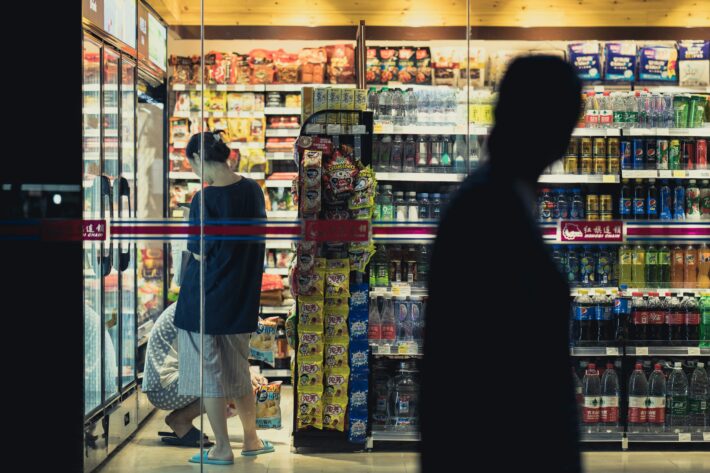The Perfect Convenience Store: Optimizing OSA, Image Recognition, and Merchandising
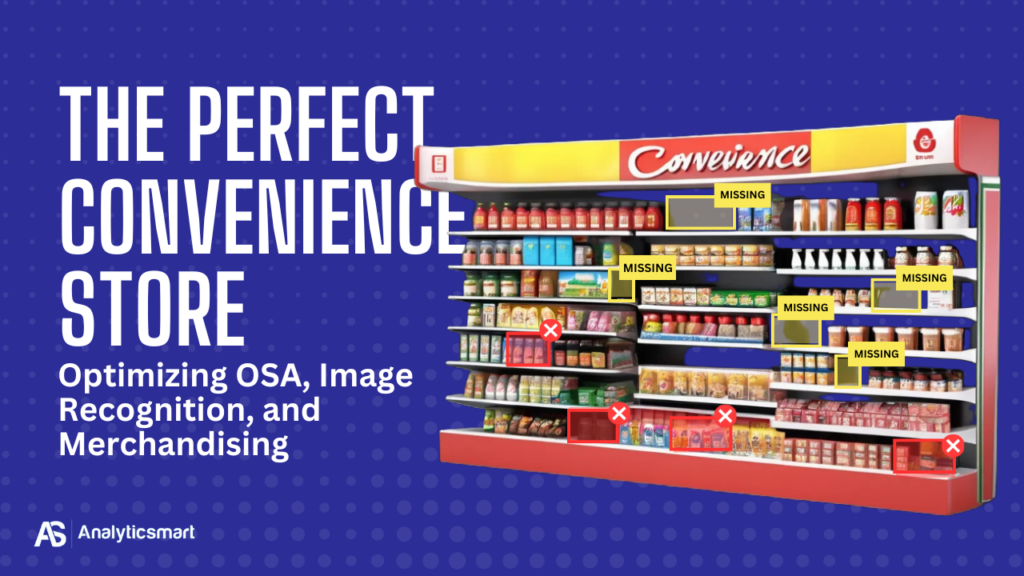
Convenience stores are an integral part of retail, serving as quick-stop destinations for customers seeking essential items, snacks, and beverages. They thrive on efficiency and accessibility, offering a unique shopping experience that caters to a fast-paced lifestyle. However, running a successful convenience store isn’t just about stocking the shelves. It’s about creating an environment that maximizes sales and delivers exceptional customer satisfaction.
This is where planograms and effective merchandising come into play. From strategic product placement to space optimization, a well-executed convenience store layout can significantly impact profitability. This blog will delve into why planograms are critical, the role of merchandising, the importance of space planning, and how Analyticsmart can be your ultimate partner in achieving merchandising excellence.
Why Are Planograms So Important in Merchandising?
Planogrammes are the unsung heroes of retail success. These visual schematics dictate the placement of products on shelves, ensuring that every square inch of retail space is utilized effectively. But why are they so important?
- Improved Product Visibility: Planograms position high-demand and high-margin products in areas with the highest visibility, increasing the likelihood of impulse purchases.
- Enhanced Customer Experience: A well-organized layout makes it easier for customers to find what they need, reducing frustration and increasing loyalty.
- Data-Driven Decisions: Planograms are often backed by sales and inventory data, allowing retailers to make informed decisions about which products to prioritize.
- Consistency Across Locations: For chains with multiple stores, planograms ensure uniformity, which strengthens brand identity and customer trust.
For convenience stores, where shelf space is often limited, planograms are especially critical. They allow store owners to strike the perfect balance between variety and accessibility, optimizing both customer experience and profitability.

The Role of Effective Merchandising in Convenience Stores
Merchandising is much more than placing products on shelves. It’s about understanding customer behavior, market trends, and seasonal demands to create an engaging shopping experience. In convenience stores, effective merchandising plays a vital role in the following areas:
- Maximizing Sales Per Square Foot: Every inch of a convenience store counts. Merchandising strategies ensure that high-demand items occupy prime shelf space, driving sales.
- Encouraging Impulse Purchases: Convenience stores thrive on impulse buys. Eye-catching displays and strategic product placement encourage customers to pick up additional items.
- Creating a Logical Flow: A well-merchandised store guides customers intuitively from one section to another, increasing their time spent in the store and their likelihood of making a purchase.
- Reducing Waste and Overstock: By aligning product placement with customer preferences and sales data, merchandising helps minimize unsold inventory and waste.
With the right merchandising strategy, convenience stores can transform from basic retail outlets into profitable hubs of customer satisfaction.
Convenience Store Shelving: How to Optimize Space Planning in Retail
Optimizing space in a convenience store is both an art and a science. Limited floor space means every decision must be deliberate. Here are key strategies for effective space planning:
- Zoning: Divide the store into distinct sections based on product categories, such as beverages, snacks, essentials, and seasonal items. This makes navigation intuitive for customers.
- Use Vertical Space: Invest in shelving solutions that utilize vertical space, allowing you to display more products without overcrowding the aisles.
- Implement Hot Spots: Identify high-traffic areas near entrances, checkout counters, and main aisles, and place high-margin or popular items in these zones.
- Seasonal Adjustments: Rotate products based on seasonal demand. For instance, display cold beverages near the entrance during summer and hot beverages during winter.
- Data-Driven Layouts: Use sales and foot traffic data to determine which products deserve premium shelf space.
By focusing on these tactics, convenience stores can make the most of their limited space while ensuring a seamless shopping experience.
On-Shelf Availability (OSA): Ensuring Products Are Always in Stock
On-shelf availability refers to the ability of a store to have the right products available on the shelves at all times, in the right quantities. It’s one of the most critical factors in convenience store merchandising because it directly impacts customer satisfaction and sales performance.
Why Is On-Shelf Availability Important?
- Customer Experience: Nothing frustrates customers more than empty shelves, especially when they are looking for essentials or popular items.
- Sales Maximization: Every out-of-stock product is a missed sales opportunity. Maintaining optimal OSA ensures that customers can always find what they need.
- Reduced Lost Sales: By monitoring and managing OSA in real time, convenience stores can quickly restock items before they run out, minimizing lost sales.
- Better Inventory Management: OSA insights help store managers balance inventory levels, avoiding overstocking or understocking.
Display Audits: Keeping Merchandising Standards Consistent
Display audits are essential for ensuring that shelves, endcaps, and promotional displays are set up according to planograms and merchandising guidelines. These audits verify that products are displayed correctly, ensuring compliance across all locations.
Benefits of Display Audits:
- Merchandising Consistency: For multi-store chains, display audits ensure a uniform shopping experience, strengthening brand identity.
- Promotion Compliance: Audits help confirm that promotional displays are properly executed, maximizing the impact of marketing campaigns.
- Improved Visual Appeal: A well-audited store is more visually appealing to customers, encouraging them to browse and make additional purchases.
- Operational Efficiency: By regularly auditing displays, stores can quickly identify and correct any errors or inconsistencies.
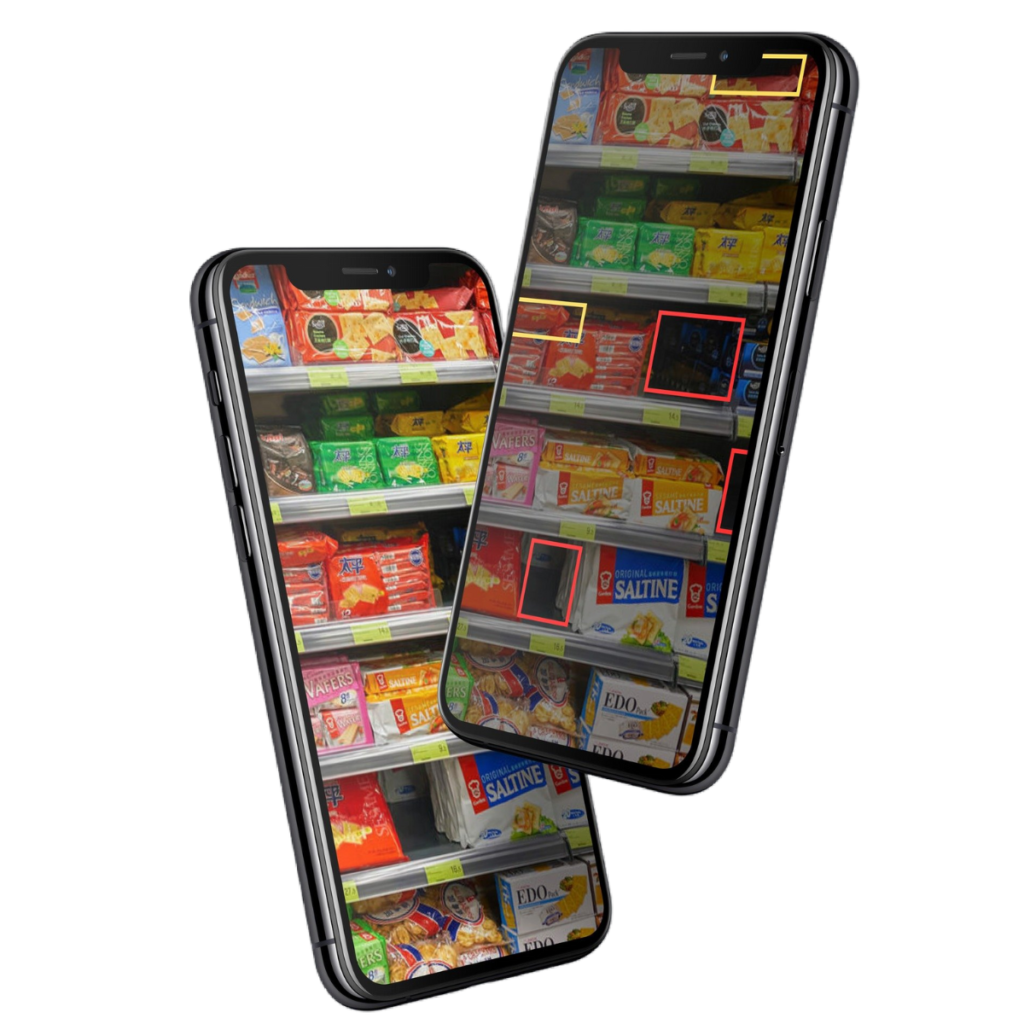
Image Recognition: Automating Merchandising Accuracy
One of the most exciting advancements in retail technology is image recognition. This AI-powered technology uses visual data from photos and videos to identify products, monitor shelf conditions, and ensure merchandising compliance.
How Image Recognition Works:
- Store teams capture images of shelves and displays using smartphones or tablets.
- The image recognition software analyzes the photos to identify products, check their placement, and ensure compliance with planograms.
- The system can flag issues such as missing products, incorrect shelf placements, or misplaced promotional materials.
Benefits of Image Recognition for Convenience Stores:
- Faster Audits: Image recognition dramatically reduces the time needed to conduct display audits, allowing store teams to focus on other tasks.
- Improved Accuracy: AI-powered image recognition eliminates human errors and ensures that all products are placed correctly.
- Real-Time Insights: Instant feedback allows store managers to make quick adjustments, ensuring optimal merchandising at all times.
- Scalability: For multi-store chains, image recognition makes it easy to audit multiple locations simultaneously, ensuring consistency across the entire brand.
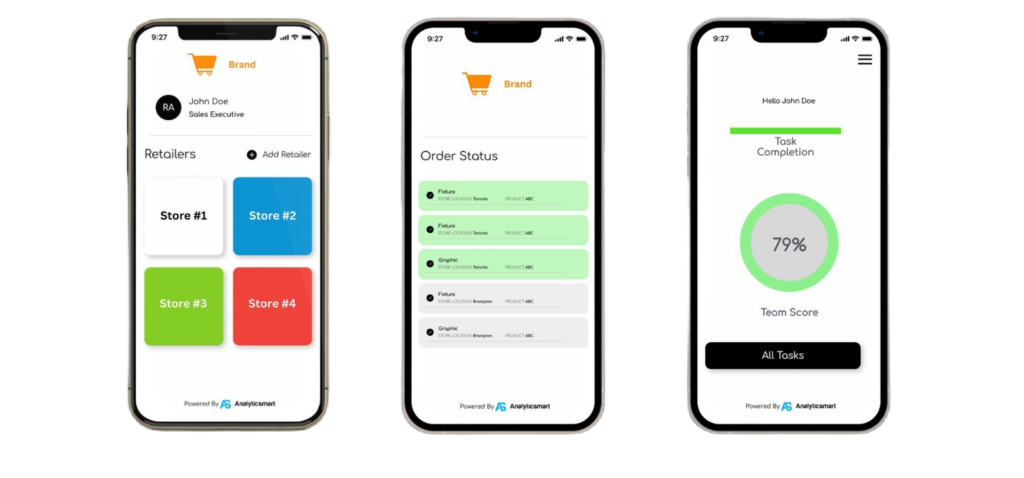
Analyticsmart’s Merchandising App: Revolutionizing Convenience Store Merchandising
Analyticsmart’s Application de merchandising is a comprehensive solution designed to help convenience stores optimize their merchandising strategies through real-time insights, compliance monitoring, and advanced technologies. By leveraging features like on-shelf availability (OSA) tracking, display audits, and image recognition, this app empowers retailers to maximize sales, ensure consistency, and provide an exceptional customer experience.
Core Features of Analyticsmart’s Merchandising App
- Real-Time On-Shelf Availability (OSA) Monitoring
The Merchandising App offers continuous monitoring of product availability, providing store managers with real-time alerts when inventory levels run low. This ensures that products are always in stock, reducing the risk of lost sales and improving customer satisfaction. - Automated Display Audits
The app enables store teams to conduct regular display audits by uploading photos of shelves and displays. It then verifies the display setup against planogram guidelines, ensuring compliance and highlighting any discrepancies that require correction. - Image Recognition Technology
Using AI-powered image recognition, the app can analyze shelf images to identify products, check placements, and flag any issues such as missing items or incorrect shelf arrangements. This streamlines the auditing process and improves merchandising accuracy. - Planogram Compliance Management
Ensure that planograms are implemented consistently across all locations. The app tracks merchandising compliance and helps store teams quickly identify and resolve any errors, ensuring a uniform and appealing shopping experience. - Aperçus basés sur les données
Analyticsmart’s app provides actionable insights through dashboards and reports. Store managers can track sales performance, shelf efficiency, and merchandising trends to make more informed decisions and drive continuous improvement. - Easy Photo Uploads and Audits
The Merchandising App allows store teams to upload photos for immediate analysis. These images are compared to planogram data, and the system generates instant feedback for easy corrections. - Multi-Store Integration
For retail chains, the app offers centralized management of merchandising standards across multiple locations. Store teams can coordinate audits and receive unified insights, ensuring consistency across all stores.
How These Technologies Work Together
By combining on-shelf availability, display audits, and image recognition, Analyticsmart’s Merchandising App creates a seamless, data-driven merchandising strategy. Here’s how these technologies work in tandem:
- Step 1: Track OSA in Real Time
Ensure that all products are available on the shelves at all times with continuous monitoring and automated low-stock alerts. This minimizes out-of-stock scenarios and ensures customer needs are always met. - Step 2: Conduct Regular Display Audits
Use the Merchandising App to verify that displays are set up according to planograms. Store teams can upload photos of their displays, and the app will identify any issues or non-compliance for immediate correction. - Step 3: Automate with Image Recognition
Capture and analyze shelf images to quickly identify and resolve any issues such as misplaced products or incorrect promotional displays. Image recognition technology speeds up the auditing process and ensures that merchandising standards are maintained consistently across all stores.
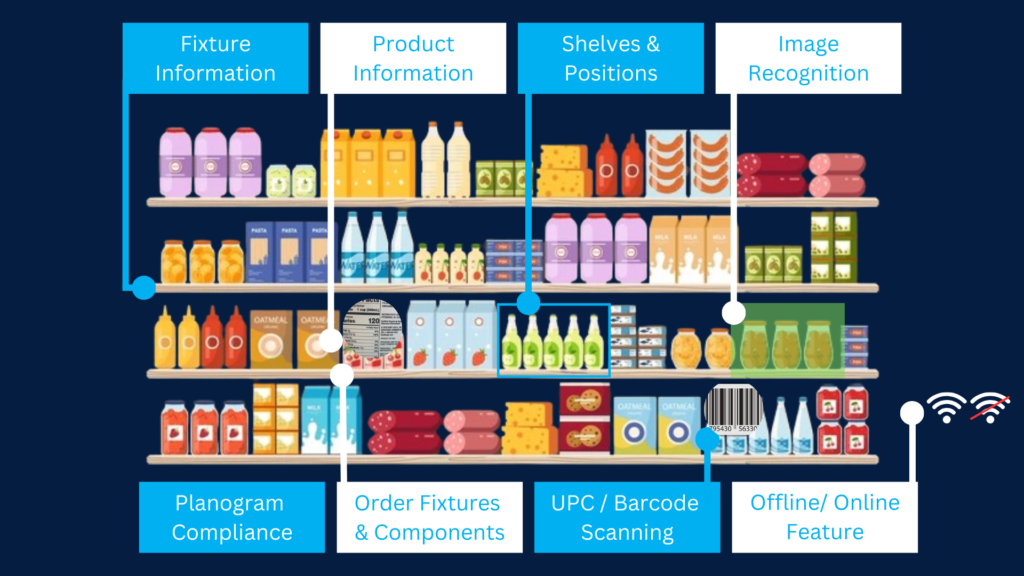
The perfect convenience store doesn’t happen by chance. It’s the result of meticulous planning, strategic merchandising, and a commitment to delivering an exceptional customer experience. From planograms to advanced technology, every aspect plays a crucial role in shaping success.
Analyticsmart is here to help you navigate the complexities of retail, offering cutting-edge solutions and expert guidance. With our planogram services and Merchandising App, you can transform your convenience store into a model of efficiency and profitability.
FAQ's
They help organize limited shelf space efficiently, improve product visibility, and enhance the overall shopping experience.
Analyticsmart provides tailored planogram services using advanced software and over 15 years of industry expertise.
Limited shelf space, maintaining consistency across locations, and adapting to changing trends are common challenges.
Space planning involves optimizing the layout of a store to make the best use of available space and enhance the shopping experience.
The app tracks adherence to planograms and merchandising standards in real time, ensuring consistency across all locations.
A display audit ensures shelves and promotional displays are set up according to planograms. The Merchandising App allows store teams to upload photos of displays, which are automatically analyzed for compliance, reducing manual errors and speeding up the audit process.
Image recognition uses AI to analyze photos of shelves and identify products, placement, and gaps. The app can flag incorrect placements, missing products, or compliance issues, ensuring accurate and efficient merchandising across all store locations.
Yes, the app integrates multi-store data into one centralized platform, allowing store teams to conduct audits and track OSA consistently across all locations. This ensures uniform merchandising standards and a consistent customer experience chain-wide.
Have A Question?
Learn how Analyticsmart can elevate your retail performance with data-driven insights and customized solutions.
Contact Sales
Have a question or comment? Submit your message through our contact form and a member of our team will get back to you within 24 hours.
Marketing Head | Analyticsmart
Unlock Your Retail Potential With Us

